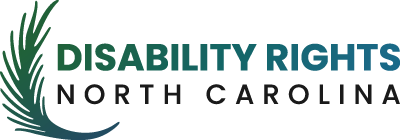People with disabilities may want to take extra care during the cold weather season. Some disabling conditions may limit sensory abilities and the ability to maintain body heat, so be particularly careful about staying warm when you are out in low temperatures.
Tips for being prepared for cold weather
- Wear multiple layers of clothing, including a scarf around your neck, a winter hat, lined boots and two pairs of socks. If possible, wear thermal gloves underneath your mittens to keep your hands warm. Wear waterproof, insulated boots to keep your feet warm and dry and to maintain your footing in ice and snow.
- Sign up for local alerts and warnings. Create and test an emergency communication plan. If you receive home-based care (e.g., homecare attendant, home health aide, visiting nurse service), include caregivers in developing your plan and familiarize yourself with your homecare agency’s emergency plan.
- Store a talking or Braille clock or large-print timepiece with extra batteries if you are blind or have a visual disability.
- Stock emergency supplies, and install battery-powered or battery backed-up carbon monoxide detectors and smoke detectors.
- Plan ahead for accessible transportation that you may need for evacuation or getting to a medical clinic. Work with local services, public transportation or paratransit to identify your local or private accessible transportation options.
- Be ready to explain to first responders that you need to evacuate and choose to go to a shelter with your family, service animal, caregiver, personal assistant, and your assistive technology devices and supplies.
- If you are dependent on dialysis or other life-sustaining treatment, know the location and availability of more than one facility.
- Inform your support network where you keep your emergency supplies; you may want to consider giving one member a key to your house or apartment.
- If you use medical equipment in your home that requires electricity, talk to your doctor or health care provider about how you can prepare for its use during a power outage.
- If you have a communication disability, make sure your emergency information notes the best way to communicate with you.
- If you use an augmentative communications device or other assistive technologies, plan how you will evacuate with the devices or how you will replace equipment if lost or destroyed. Keep model information and note where the equipment came from (Medicaid, Medicare, private insurance, etc.). If you use assistive technology devices, such as white canes, CCTV, text-to-speech software, keep information about model numbers and where you purchased the equipment, etc.
- Keep Braille/text communication cards, if used, for 2- way communication.
- Plan how you will communicate with others if your equipment is not working, including laminated cards with phrases, pictures or pictograms.
- Wear medical alert tags or bracelets.
- Plan for children with disabilities and people who may have difficulty in unfamiliar or chaotic environments.
It is important to be prepared for cold weather, especially if you have conditions that limit sensory abilities or your ability to stay warm. Use this checklist to create an emergency supply kit for winter weather. Check out our Emergency Supply Checklist for Winter Preparedness !
